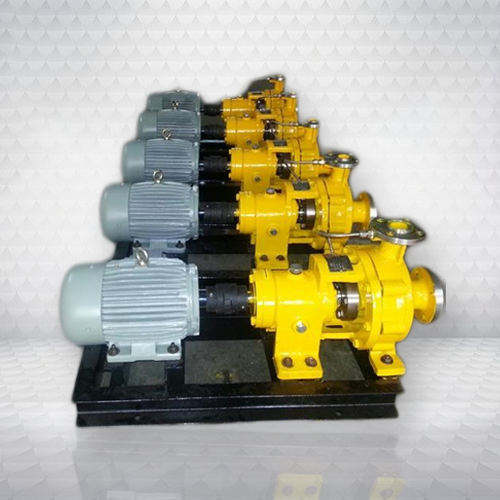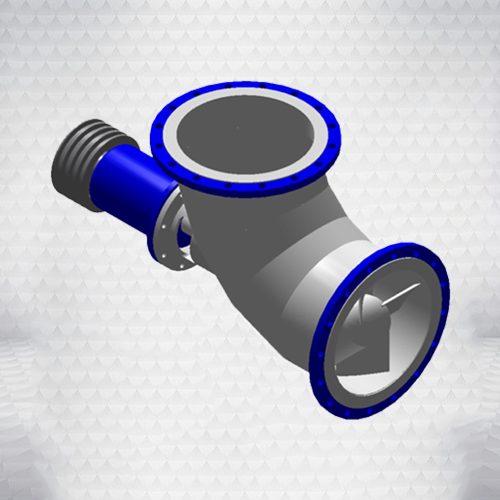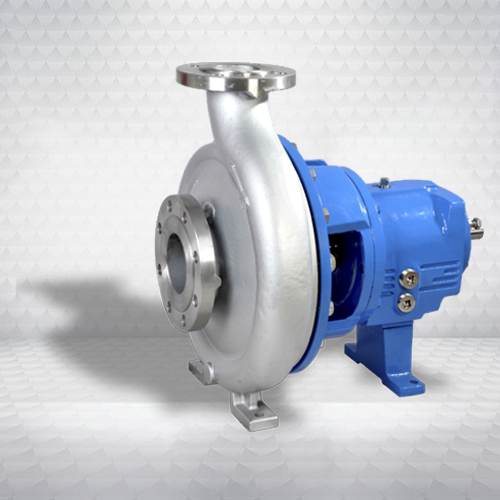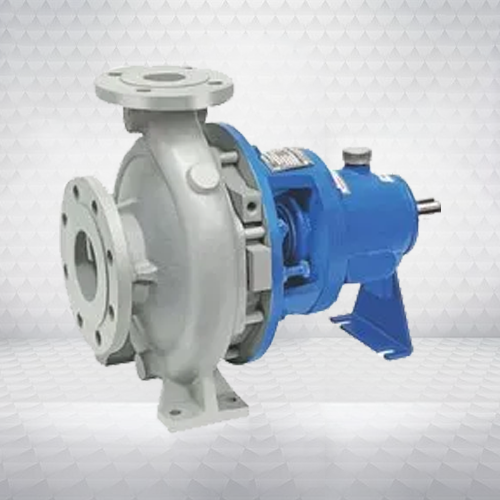Horizontal Axial Flow Pump
Product Details :
| Minimum Order Quantity | 1 Unit |
| Motor Horsepower | 200 HP |
| Stages | Single Stage |
| Motor Phase | Three Phase |
| Brand | Propeller |
| Max Flow Rate | 10000 m3/hr |
| Flow Range | 100-6000m3/hr |
| Material | Cast Iron, SS, Nickel-Chrome Alloy, Duplex steel, hast alloys, Titanium |
| Temperature | Up to 300 Degree C |
| Model Number | AF Series |
| Head | UP TO 9 mtr |
| Pump Size Available | 6-30 inch |
| Withstanding Temperature | upto 300 deg C |
Product Description :
A horizontal axial flow pump is a type of axial flow pump in which the axis of rotation is oriented horizontally. This design is commonly used in applications that require a high flow rate and a low head, such as irrigation, flood control, and drainage.
In a horizontal axial flow pump, the impeller rotates within a volute casing, and the fluid is drawn into the pump through an inlet and exits the pump through an outlet. The design of the impeller and volute casing helps to minimize turbulence and increase the efficiency of the pump.
The main advantage of a horizontal axial flow pump is its high flow rate, which makes it well-suited for applications that require large quantities of fluid to be moved quickly. The pump is also relatively simple in design, making it easy to maintain and repair.
However, a horizontal axial flow pump has some limitations as well. For example, the low head of the pump means that it is not suitable for applications that require a high pressure or the lifting of fluid over a large vertical distance. Additionally, the design of the pump can make it more susceptible to cavitation and vibration, which can impact its performance and reliability.
When selecting a horizontal axial flow pump, it is important to consider the specific requirements of the application, including the flow rate, head, efficiency, and operating conditions. In addition, it is important to consider factors such as maintenance requirements, reliability, and cost when making a selection.
Excellence Feauture :
The following are some of the features of a horizontal axial flow pump:
1. High flow rate: The design of a horizontal axial flow pump enables it to move a large quantity of fluid in a short period of time, making it ideal for applications that require a high flow rate.
2. Low head: The low head of a horizontal axial flow pump means that it is capable of moving fluid over relatively short distances, making it well-suited for applications that require a low head.
3. Simple design: The design of a horizontal axial flow pump is relatively simple, which makes it easy to maintain and repair.
4. Energy efficient: A horizontal axial flow pump is designed to be energy efficient, reducing the amount of energy required to operate the pump and minimizing the cost of ownership.
5. Versatile: A horizontal axial flow pump can be used in a wide range of applications, including irrigation, flood control, and drainage.
6. Durable: The materials of construction used in a horizontal axial flow pump are designed to be durable, helping to ensure that the pump is able to withstand the rigors of its intended application.
7. Easy to install: A horizontal axial flow pump is designed to be easy to install, reducing the time and cost associated with the installation process.
7. Easy to install: A horizontal axial flow pump is designed to be easy
When selecting a horizontal axial flow pump, it is important to consider the specific requirements of the application, including the flow rate, head, efficiency, and operating conditions. In addition, it is important to consider factors such as maintenance requirements, reliability, and cost when making a selection.
Model Features :
The specific features of a horizontal axial flow pump model can vary depending on the manufacturer and the intended application. However, some common features that you may find in different models of horizontal axial flow pumps include:
1. Impeller design: The impeller design can impact the flow rate and head of the pump. Some models may feature a closed impeller design for improved performance, while others may have an open impeller for easier maintenance.
2. Material of construction: The material of construction can impact the durability and resistance of the pump to corrosion. Some models may be constructed from stainless steel, while others may use materials such as cast iron or bronze.
3. Flow rate: The flow rate of a horizontal axial flow pump can vary depending on the model and the specific requirements of the application. Some models may be capable of delivering a higher flow rate than others.
4. Head: The head of a horizontal axial flow pump can also vary depending on the model and the specific requirements of the application. Some models may be capable of generating a higher head than others.
5. Energy efficiency: Different models of horizontal axial flow pumps can have different levels of energy efficiency, with some models being more efficient than others.
6. Control options: Some models of horizontal axial flow pumps may have integrated control options, such as variable frequency drives or pressure control systems, to help optimize pump performance.
7. Monitoring and diagnostics: Some models of horizontal axial flow pumps may include features such as monitoring and diagnostics systems to help track pump performance and quickly identify any issues.
8. Certifications: Some models of horizontal axial flow pumps may have certifications or approvals from organizations such as UL, CE, or NSF, indicating that they have been tested and certified for specific applications or safety standards.
When selecting a horizontal axial flow pump, it is important to consider the specific requirements of the application and to compare the features of different models to find the one that best meets your needs.
Advantages :
The following are some of the advantages of horizontal axial flow pumps:
1. High flow rate: Horizontal axial flow pumps are capable of delivering a high flow rate, making them ideal for applications that require a large volume of fluid to be moved quickly.
2. Low head: Horizontal axial flow pumps have a low head, which means they are capable of moving fluid over relatively short distances. This makes them well-suited for applications that require a low head.
3. Energy efficiency: Horizontal axial flow pumps are designed to be energy efficient, reducing the amount of energy required to operate the pump and minimizing the cost of ownership.
4. Simple design: The design of a horizontal axial flow pump is relatively simple, which makes it easy to maintain and repair.
5. Versatile: Horizontal axial flow pumps can be used in a wide range of applications, including irrigation, flood control, and drainage.
6. Durable: The materials of construction used in a horizontal axial flow pump are designed to be durable, helping to ensure that the pump is able to withstand the rigors of its intended application.
7. Easy to install: Horizontal axial flow pumps are designed to be easy to install, reducing the time and cost associated with the installation process.
8. Reliable: The design of a horizontal axial flow pump is intended to be reliable, reducing the risk of downtime and helping to ensure that the pump operates at peak performance.
9. Cost-effective: Horizontal axial flow pumps are often more cost-effective than other types of pumps, making them a popular choice for many applications.
When selecting a horizontal axial flow pump, it is important to consider the specific requirements of the application, including the flow rate, head, efficiency, and operating conditions. In addition, it is important to consider factors such as maintenance requirements, reliability, and cost when making a selection.
Application :
Horizontal axial flow pumps are widely used in a range of applications, including:
1. Irrigation: Horizontal axial flow pumps are commonly used in irrigation systems to pump water from rivers, lakes, and wells to agricultural fields.
2. Flood control: Horizontal axial flow pumps are often used in flood control systems to pump water from low-lying areas to higher ground.
3. Drainage: Horizontal axial flow pumps are commonly used in drainage systems to pump water from basements, trenches, and other low-lying areas to prevent flooding.
4. Raw water supply: Horizontal axial flow pumps are used in raw water supply systems to pump water from rivers, lakes, and wells to treatment plants.
5. Power generation: Horizontal axial flow pumps are used in power generation systems to pump water to cool turbines and to transfer hot water from turbines to condensers.
6. Mining: Horizontal axial flow pumps are used in the mining industry to pump water from mine shafts, to transfer sludge, and to supply water to mining operations.
7. Chemical processing: Horizontal axial flow pumps are used in chemical processing plants to transfer chemicals and to cool reactors.
8. Water treatment: Horizontal axial flow pumps are used in water treatment plants to transfer water from the treatment process to storage tanks or to distribute water to end-users.
9. Municipal water supply: Horizontal axial flow pumps are used in municipal water supply systems to pump water from treatment plants to storage tanks and to distribute water to end-users.
When selecting a horizontal axial flow pump for a specific application, it is important to consider factors such as the flow rate, head, efficiency, and operating conditions required for the application. In addition, it is important to consider factors such as reliability, maintenance requirements, and cost when making a selection.
Additional Information :
Item Code : AF
Pay Mode Terms : L/C (Letter of Credit)
Port of Dispatch : ahmedabad
Production Capacity : as per customer requirment
Delivery Time : as per customer requirment

 Horizontal Axial Flow Pump
Horizontal Axial Flow Pump
 Vertical Axial Flow Pump
Vertical Axial Flow Pump
 Chemical Process Pumps
Chemical Process Pumps
 Knife Gate Valve
Knife Gate Valve
 High Flow Agitator
High Flow Agitator
 Solid Liquid Separator Machine
Solid Liquid Separator Machine
 Submersible Agitator and Mixture
Submersible Agitator and Mixture
 Polypropylene Pumps
Polypropylene Pumps
 Axial Flow Pump
Axial Flow Pump
 Centrifugal Process Pump
Centrifugal Process Pump
 MVR Axial Flow Pump
MVR Axial Flow Pump
 Multi Effect Evaporator Pump
Multi Effect Evaporator Pump
